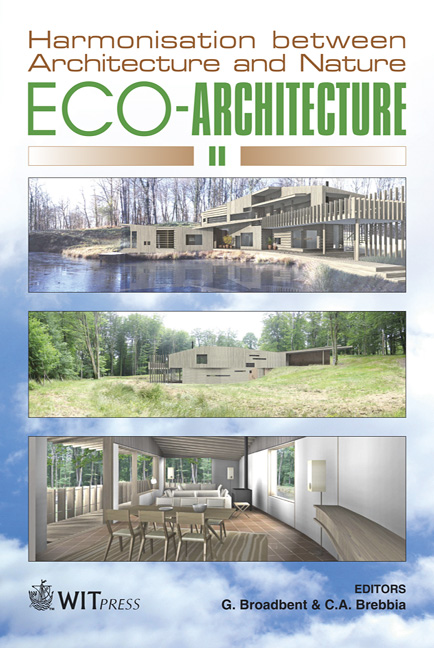Living Skins: Environmental Benefits Of Green Envelopes In The City Context
Price
Free (open access)
Transaction
Volume
113
Pages
10
Page Range
149 - 158
Published
2008
Size
1,124 kb
Paper DOI
10.2495/ARC080151
Copyright
WIT Press
Author(s)
D. Roehr & J. Laurenz
Abstract
This research reports the potential environmental benefits derived from an overall intervention of living skins [green roofs and green façades] in the city core of Vancouver, Canada. These include the reduction in cooling and heating demand; reduction in stormwater runoff; improvement of air quality; enrichment of urban biodiversity and urban agriculture; reduction in the urban heat island effect; the contribution to carbon neutral architecture; and an assessment of different construction systems. It analyses the environmental behaviour of the selected site by applying the Seattle Green Factor. The research focuses on the energy performance of a typical residential building within the selected area, through the Energy 10 simulation program. It also analyses the reduction in stormwater runoff through the Curve Number Method; as well as the reduction of CO2 emissions based on related research. Obtained data shows that the total energy used for cooling is reduced [100%] through the greening of roofs and façades, which means the 9% of the total energy demand by the studied building. It also shows that CO2 emissions would decrease by 9%; and stormwater runoff would be reduced by 4%. The research compares these findings with previous related research on green roofs, façades and urban forests. Its findings suggest that these types of \“living skins” interventions achieve better environmental performance in warm-dry climates where cooling energy demand is greater. Keywords: living skins, green roofs, green façades, green walls, energy simulation, energy savings, CO2 emissions, stormwater runoff, living skins technology, environmental benefits.
Keywords
living skins, green roofs, green façades, green walls, energy simulation, energy savings, CO2 emissions, stormwater runoff, living skins technology, environmental benefits.





